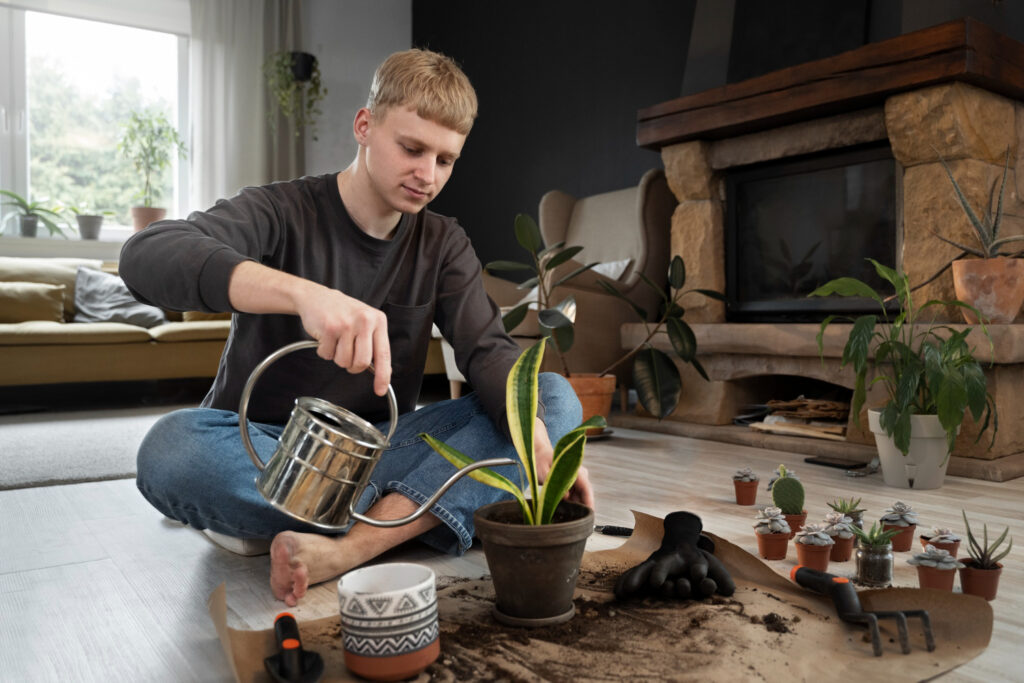Introduction: Cultivating Green Spaces Year-Round
As winter blankets the globe with snow and frost and ice, the enticement of the lush greenery and bright blooms could appear to be an ephemeral time. But for those who love gardening winter is an opportunity to bring the splendor of nature indoors and keep growing a lush garden. In this article, we’ll discuss the art and science behind winter gardening. We’ll provide suggestions and tricks to cultivate plants indoors to improve the appearance of your home and raise your spirits in the coldest time of the year.

1. Assessing Indoor Conditions
Before you begin winter gardening, you need to evaluate the indoor conditions at your house to determine what plants are thriving in the space. Think about factors like sunlight, humidity levels, and temperature fluctuations when choosing plants that will thrive in the conditions in your home. Pick a range of plants that have different needs for water and light to create a varied and balanced indoor garden.
2. The importance of selecting the right plants
Pick plants that are famous for their capacity to thrive indoors as well as withstand winter weather conditions. Popular options for indoor gardening include:
- Tropical Houseplants: Peace lilies, Pothos, Philodendrons, and spider plants are ideal for light conditions. They also can help to purify indoor air.
- Succulents and cacti: These hardy plants thrive in sunny, dry conditions, and require only minimal watering, which makes them great for sunny windowsills and bright corners.
- Herbs: You can grow the freshest culinary herbs in your home for all-year-round freshness. The most popular options are mint, basil, parsley, and chives. They can be planted in windowsills, or even under the grow light.
- Flowering Plants: Add an element of color to your home by planting flowering plants like African orchids, violets, and cyclamens. These plants will bloom all through the winter months if they are properly cared for.
3. In providing adequate light
Lighting is crucial when it comes to plants in the indoor environment, particularly in the dark, gloomy winter days. Plants should be placed near windows facing south for maximum exposure to sunlight and artificial lighting or fluorescent bulbs if they are needed to ensure that the plants get enough light to ensure healthy growth. Regularly rotate plants to ensure uniform growth and stop plants from leaning towards lighting sources.
4. Maintaining proper humidity and temperature
Keep the humidity levels constant and temperature ranges to provide an environment that is comfortable for indoor plants. The grouping of plants will help create microclimates that have more humidity, and installing a humidifier or containers of water around plants can increase the humidity levels in humid indoor air. Avoid placing plants in areas near window or heater vents because sudden temperature changes can cause stress to plants.
5. Feeding and watering
Inspect indoor plants for watering at the point that the soil’s top layer appears dry. Take note not to drown or let plants sit in stagnant water which could lead to root decay. Utilize a well-balanced liquid fertilizer that has been diluted to half strength for feeding indoor plants every 4 to 6 weeks throughout the growing season and follow the label’s directions carefully to avoid fertilizing too much.
6. Monitoring and Care
Maintain a close watch on your indoor plants through the winter months, looking for indications of pests, stress, or diseases. Monitor soil moisture levels frequently and adjust the frequency of watering depending on the plant’s requirements and the environmental conditions. Check your plants for signs of pests like spider mites aphids or scale insects. tackle infestations immediately with organic insecticidal soap or oil.
7. Reaping the benefits
In the winter, indoor gardening months can bring many benefits in addition to beautifying your home. Studies have shown how indoor vegetation can enhance air quality, decrease anxiety, improve mood, and improve productivity, which makes them great as an addition to any space. Spend some time enjoying the beauty and peace of your garden’s indoor oasis and revel in the feeling of satisfaction that comes from nurturing living creatures through the coldest winter days.
Conclusion: Nurturing Nature Indoors
The winter garden is a wonderful relief from the winter frigid winter weather and allows you to connect with the natural world right from your home. If you select the right plants that have enough sunlight, and humidity, as well as temperature, feeding and watering with attention, and maintaining and monitoring your indoor garden and reaping the numerous benefits you can build an outdoor oasis that lifts your spirits and feeds your soul through the winter seasons.
Happy gardening and may your garden indoors be a source of happiness beauty, inspiration, and beauty when you establish a connection to the natural world all year long!
Checkout: Top Free Home Gardening Books